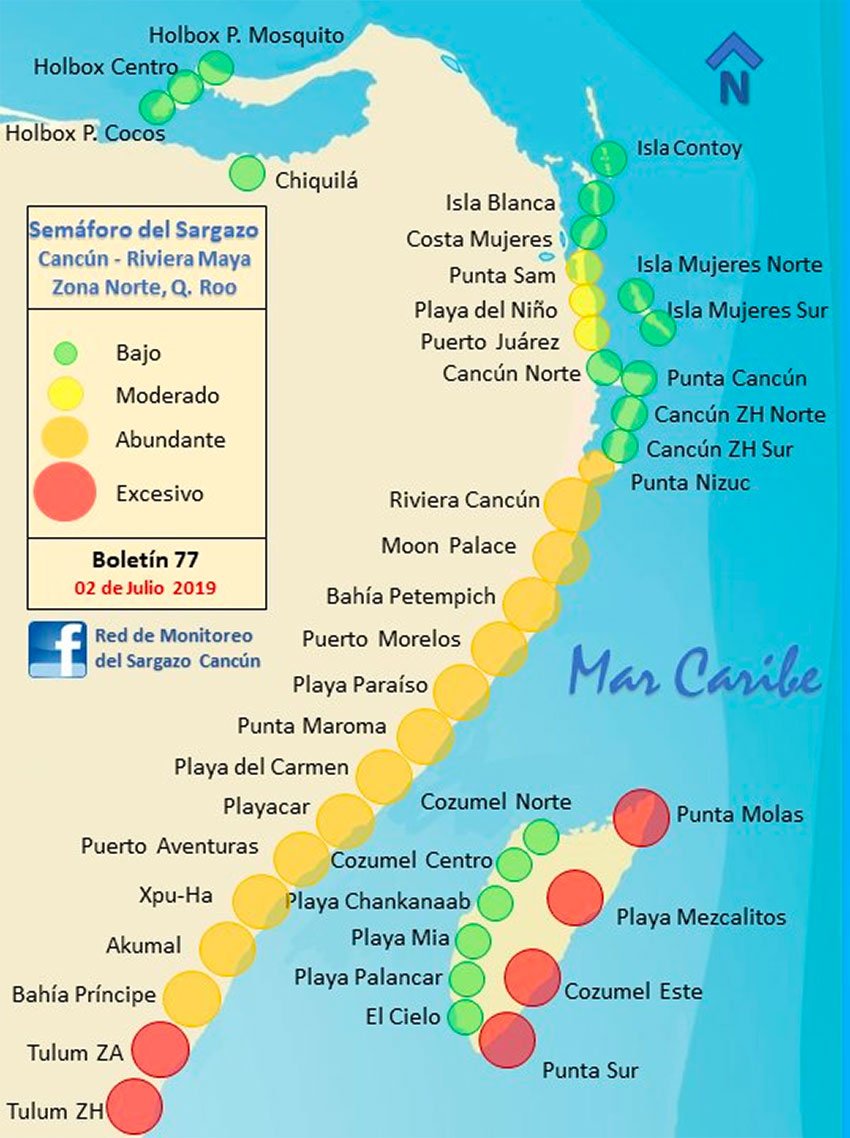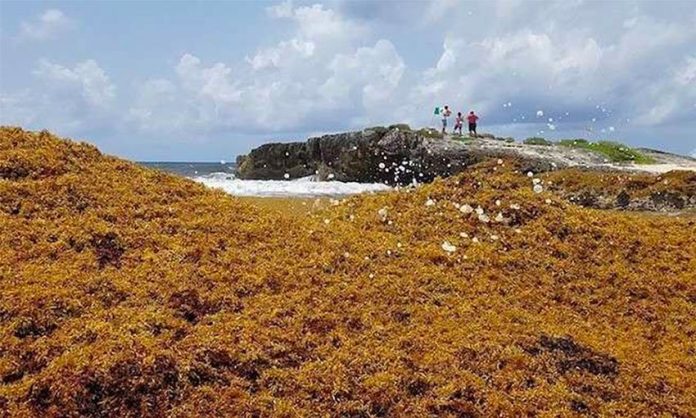Huge quantities of sargassum have invaded the coastline of southern Quintana Roo this week, and plenty more is predicted to arrive in the coming weeks.
Around 300 kilometers of beaches between Tulum and Xcalak are affected by the seaweed’s arrival, which was predicted by the Cancún sargassum monitoring network last week and began early Monday morning.
Water at beaches such as Boca Paila, Sian Kan, Punta Yuyum, Zamach, Punta Allen, Uvero, Puerto Bravo and Mahahual is stained brown due to the large presence of sargassum.
Off the coast of Xcalak – a small town near the border with Belize – aerial images show that the water is currently covered with a layer of coffee-colored foam, which makes the sea look more like a swamp.
The scene is similar at Tulum, where the normally turquoise waters have turned a shade of murky brown and the fetid odors of decomposing sargassum linger over the town’s beaches.

Satellite images show that a lot of the Caribbean Sea between the Quintana Roo coastline and Jamaica is covered with the macroalgae, much of which is expected to drift to the state’s south.
By the end of the 2019 sargassum season, five times the quantity of seaweed that washed up on beaches last year is predicted to have arrived.
Esteban Amaro, a marine biologist and chief of the monitoring network, told the newspaper Milenio that the large quantities of sargassum are the result of an increase of nutrients in the sea and higher than normal water temperatures due to climate change.
“We have [water] temperatures between two and three degrees above average,” he said.
Amaro said that only minimal amounts of sargassum will reach coastal locations in the north of Quintana Roo such as Cancún, Isla Mujeres, Puerto Morelos and Playa del Carmen, whereas beaches between Tulum and Xcalak will continue to experience “high-intensity arrivals” of the weed.
Ocean currents dictate where the seaweed ends up, he explained.
For hotel owners, the cost of keeping beaches clean has become “unsustainable,” according to an industry leader. Some are spending as much as 900,000 pesos (US $47,000) a month to ensure that beaches meet the expectations of tourists.
However, Tulum Hotel Association president David Ortiz said that the capacity to collect the unwelcome seaweed will be exceeded by the latest sargassum invasion.
He said that the arrival of the navy – which is leading the government’s anti-sargassum strategy – has provided hotel owners with some relief but added that the construction of the seaweed-collecting vessels promised by the government last week is urgent.
Ortiz also said that hotel owners would be prepared to pay a special sargassum tax if they knew that their money would be used wisely.
“There is already the federal land-maritime zone payment that hotel owners with beach [access] pay and there is also the accommodation tax . . . Why not design a new tax? I think that we would be open to it as long as there is timely management of this problem.”
Source: Milenio (sp)
